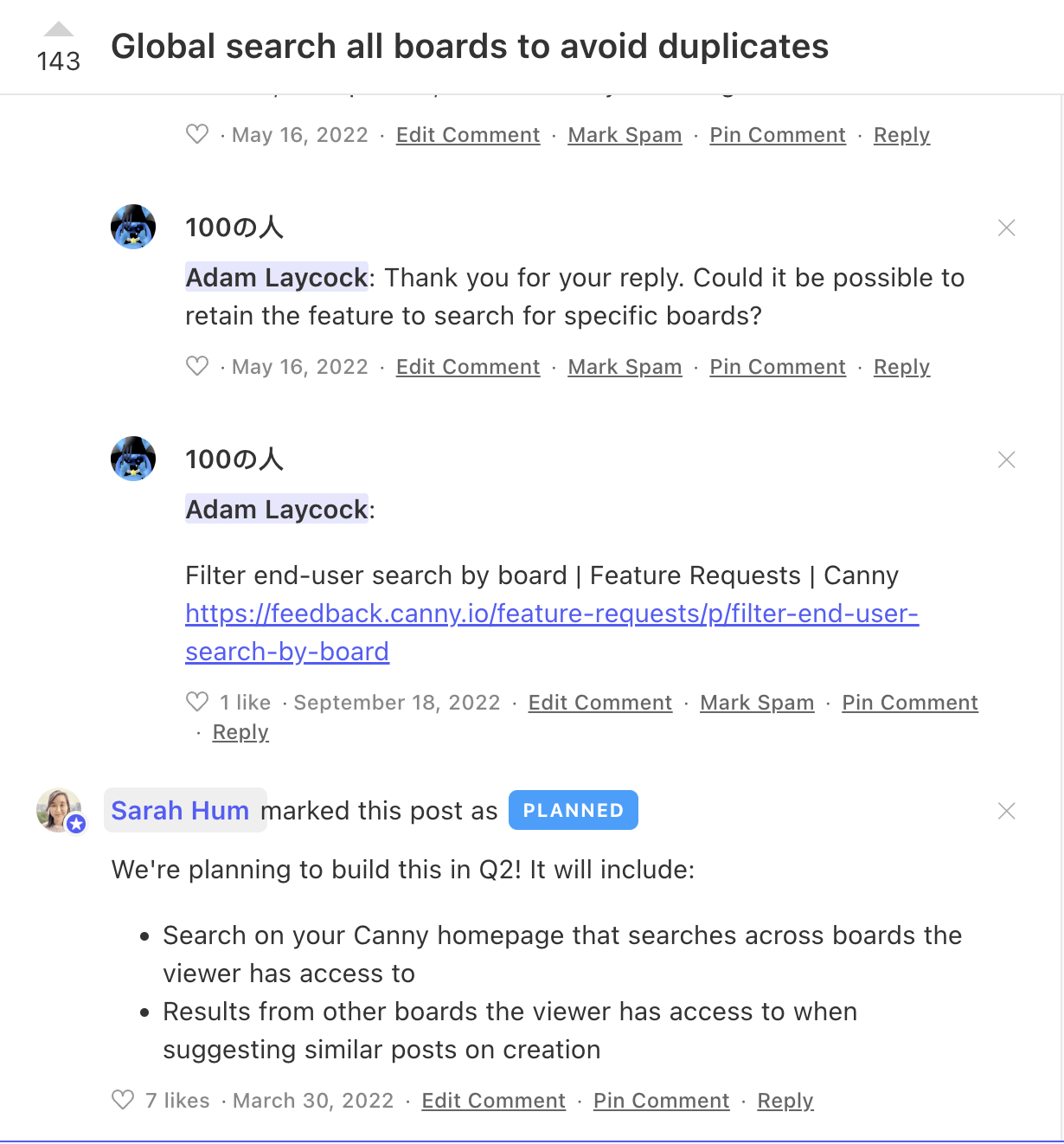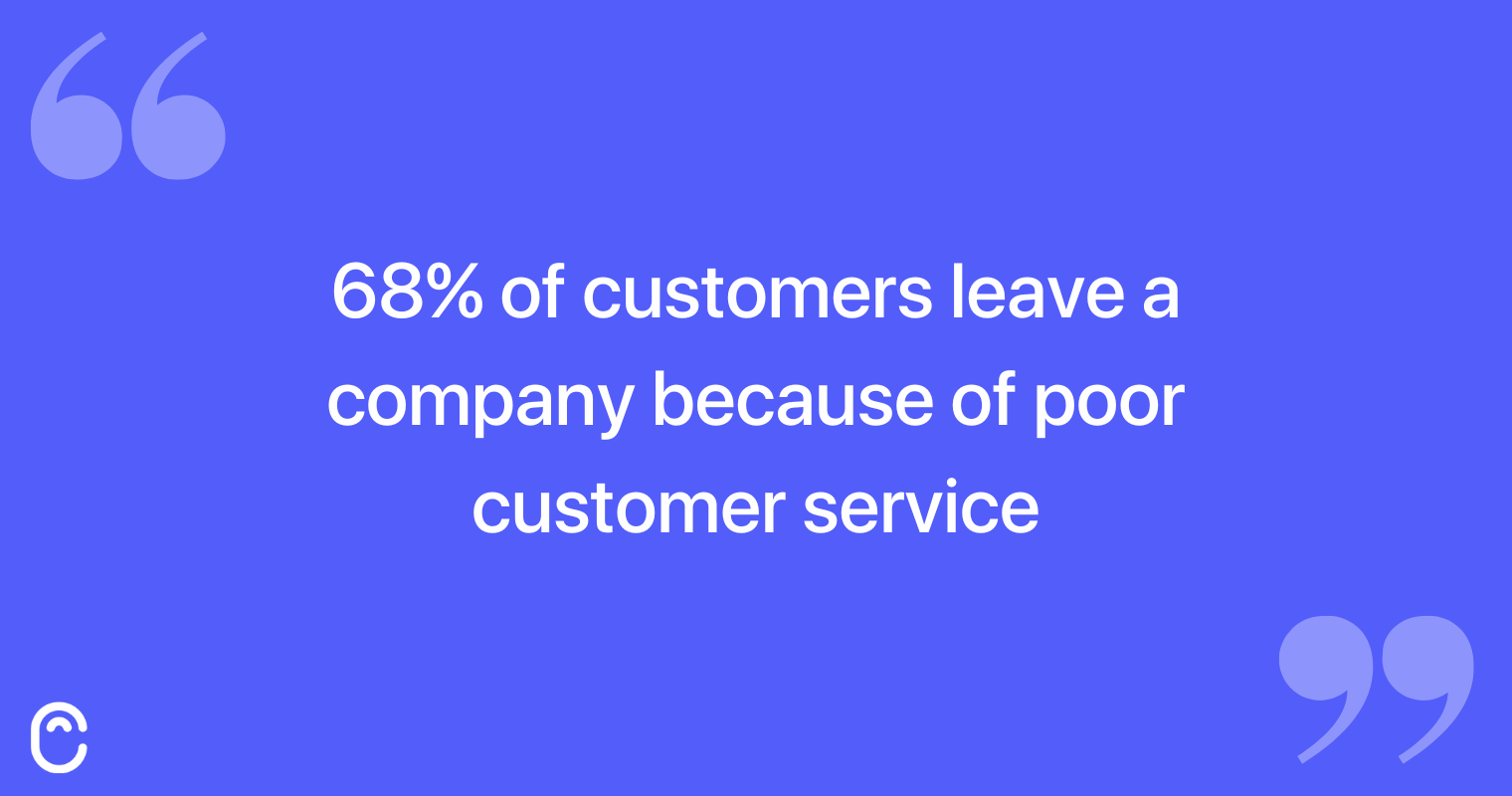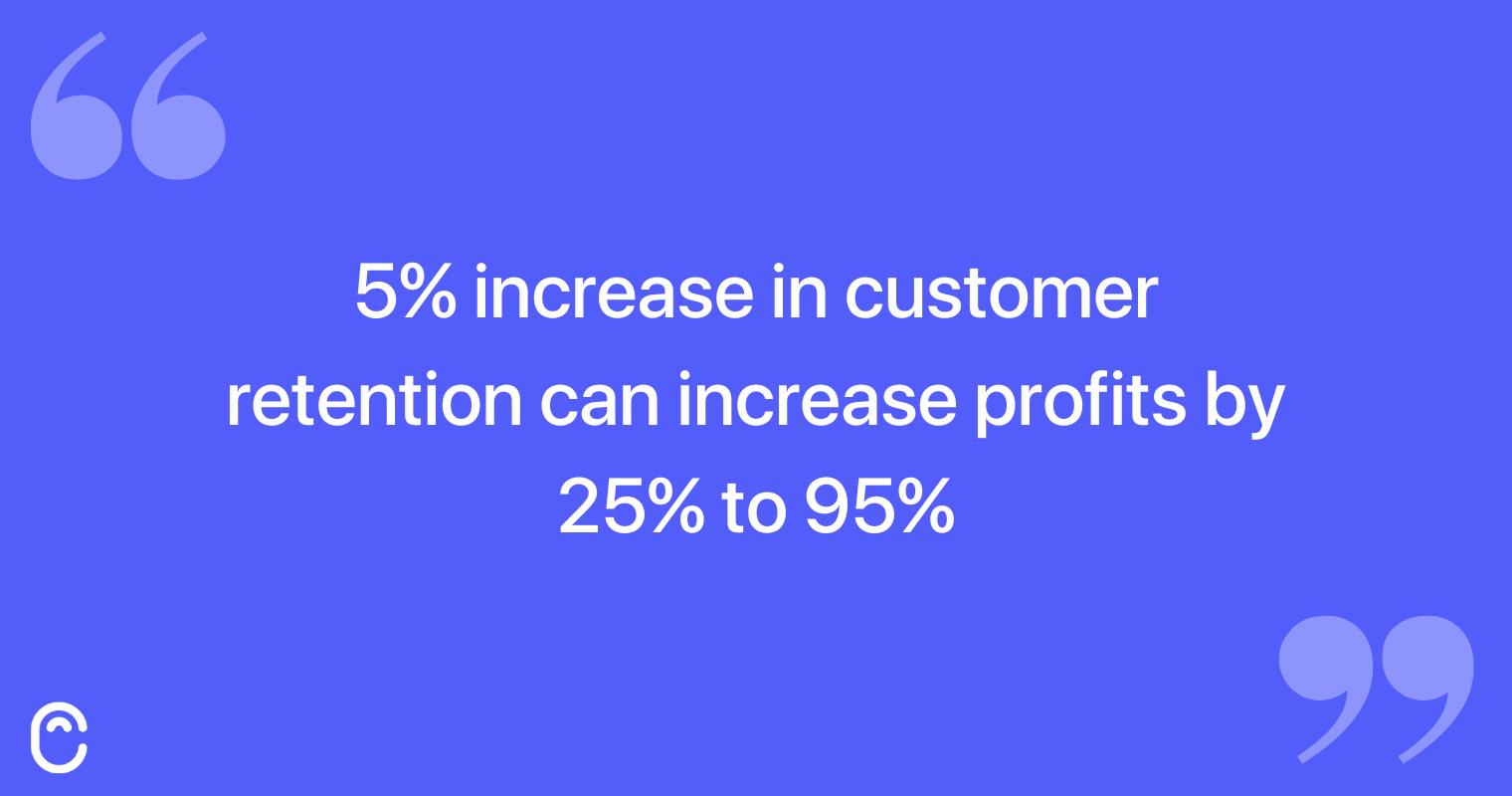If you’re like most companies, a big focus for 2023 is winning new business. But how much effort are you putting into keeping existing ones around and happy? And what about churn?
Churn is the number of customers that leave a company. Sometimes it’s expressed as a percentage of the total number of customers. It’s an inevitable part of doing business. So what can we do if we can’t avoid it?
That’s right – learn from it and move on. In this article, we’ll explain what exactly you can learn from these experiences and how you can use it to your advantage.
Step 1: identify the churn
Before we dive in, let’s first define the different types of churn.
- Churn rate is the raw percentage of lost customers over a specific time period
- Negative churn is where you want to be, of course. It happens when revenue from expansion overshadows the lost revenue from customer churn. Upsells, add-ons and upgrades help to achieve that.
- Positive churn is common in certain industries that operate under the outcome model. Recruitment, dating, weight loss and health services are some examples. A customer achieves the desired outcome and leaves. The goal is still achieved, so this churn is viewed as positive.
- Voluntary churn (aka active churn) happens when an existing customer decides to and then leaves.
- Involuntary churn (aka (delinquent churn) occurs when there’s a payment failure or some other issue that prevents a customer from continuing to use the product.
It’s important to understand what types of churn you’re facing. That lets you understand and respond appropriately.
Step 2: break it down
Understanding why customers leave is the key to providing a better experience and avoiding customer churn in the future.
To start, you can look at your data on churn rates, current customers, and their usage of your product or service. Calculate the churn rate (we’re explaining how to do that in step 4) and explore how they’re using the product. This will help you understand when and why customers choose to leave. As with any set of data, try to identify patterns. When only one customer leaves, it’s unfortunate, but likely not a dealbreaker. But, when five or more customers leave for exact same reason, you need to investigate.
To learn from churning customers, you need to offer them a way to give you feedback. Typically, exit surveys are used here.
Step 3: check yourself
Maybe you lost quite a few customers in the past quarter. You’re probably feeling a bit down. But have you compared your customer churn rate to the industry average? Maybe there’s something going on in the world (ahem, recession, ahem) that’s affecting everyone around you and not just you.
It’s hard to tell what the average churn rate is. But here are some guidelines. In SaaS, the churn rate you want to strive for is 2%-8% of MRR. Of course, this varies by the age and of the company, the number of customers, and the amount (and quality) of competition.
General rule: the lower the churn rate, the better. But don’t focus as much on the number itself. Rather, notice the trends. If your churn rate is decreasing over time, do more of what you’re doing! If not, think of other customer retention strategies.
Here are some of the common reasons why customers churn:
- No longer need your product
- Dissatisfied by the product
- – Lack of certain features/integrations
- Unhappy with the customer service
- Reduced budget
- Not using the product enough
- Found a better/cheaper solution (consider running product pricing experiments)
- Their payment method expired and needs to be updated (involuntary churn)
- The billing contact left the company and needs to be updated (involuntary churn)
Some of these you can combat before it becomes a problem. Others just can’t be helped. So focus on those that you can fix! Here are a few ideas.
No longer need your product → product improvements
When you know that a customer is unhappy with your product, it’s a golden opportunity. Chances are, if they’ve shared their dissatisfaction with you, they’ve been struggling for a while. So, first and foremost, make communication that easy and seamless for them. Give them a platform to easily share feedback and hear back from you.

After you’ve identified the gaps in your offering (could be a missing feature, a lacking integration or anything else that’s vital for this client), assess whether or not you can build it. Prioritization comes in handy here. Identify how much time and effort this would take. Determine how useful this will be in the long run (is it just 1 customer who’s requesting it? Are they a vary valuable and revenue-driving customer?). Then, if you can, build what your customer is asking for.
And, make sure to let them know once it’s live! There’s a good chance if you let a churned customer know that you’ve solved their pain point that they’ll give you a second chance.
Unhappy with the customer service → customer support and customer success
This goes without saying – customer support and success are the keys to customer satisfaction.
68% of customers leave a company because of poor customer service. That’s a lot of money left on the table!

You also can’t get a better churn prediction indicator than those conversations that happen with the support reps. Every touch point during customer onboarding and throughout their entire customer journey directly affects the churn risk.
The trick is to pay attention to red flags, monitor customer behavior and product usage, gather customer insight in time, and try predicting churn before it occurs.
Your support and success teams should be set up to help you predict churn and prevent it. Let them leave notes and tags in your success and CRM software highlighting risks. Encourage them to leave feedback (or vote on existing feedback) on behalf of customers in your feedback management system. Get them to update customers as the company addresses their pain points.
These teams are your frontline when it comes to preventing churn. Rely on them and trust them.
Not using the product enough → product use
Customers not using your product is the first red flag. To prevent customer churn, first find a way to identify inactivity and low engagement.
Then, take action.
Try to reengage your users by offering support, different use cases for your product, helpful resources and so on. Remind them why they signed up in the first place and show how much they could be doing with the help of your product. FOMO might work here 😉
Customer success management plays a huge role here, so don’t overlook this. Direct outreach (even if it’s automated) from success can really help encourage usage. A quick call or demo might be all your customer needs to get going.
Step 4: calculate the churn rate
There are a few calculations you can perform as a way of churn analysis:
- Customer churn rate % (during X period) = (# customers lost during X period / # customers at the start of X period) x 100

2. Revenue churn rate % = ((revenue at the start of X period – revenue at the end of X period) / revenue at the start of X period) x 100

These should help you get a clear idea of your churn rate.
Many tools will help you monitor and track churn over time. Ideally, you want churn to be automatically calculated and easy to access so you can work on improving it.
Step 5: minimize instead of eliminating
The truth is, customers will come and go. That’s just the way it is. You can’t tie your users to you no matter how amazing your product is.
You can try your absolute best to gather their feedback, respond to their comments, build the features they’re requesting, update them on the progress, but eventually they may still leave.
You can’t eliminate churn completely. So focus on reducing churn instead. ven a 1% decrease in your churn rate can make a huge difference to your bottom line. According to research by Bain & Company, a 5% increase in customer retention can increase profits by 25% to 95%.

Before that happens, interview your current customers. Try to get a deeper understanding of their experiences and pass that on to the product team. You can gather invaluable insights by just asking your users about their experience.
Of course, asking each and every client individually is time-consuming. And then what do you even do with all those responses? How do you process the results, identify patterns and make sense of it all?
A centralized feedback system is the best solution.
Canny is a feedback management tool that helps you collect feedback from your users and have it all in one place. Instead of chasing it around Slack, email, Zendesk and Salesforce, you can have it all in one location.
You can even invite your users to engage – leave comments, upvote other requests, or have a conversation. Then you can prioritize those requests, add them to the roadmap and then announce your updates through your changelog.
When your customers see that you’re actually listening and building what they’re craving, they are that much less likely to churn.
Learn from every experience
You can’t avoid churn completely. So try to focus on what you can learn from each churning customer. Break it down for yourself and your teams, control what you can and don’t stress over the things that you can’t influence. And remember – feedback management is still at the center of it all.



![5 steps to learning from churning customers [+churn rate formulas!]](https://canny.io/blog/wp-content/smush-webp/2023/01/featured-img-churn.png.webp)


